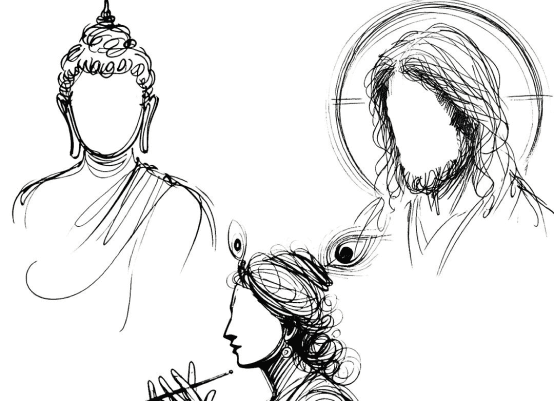In today’s world, we are constantly chasing happiness, often through fleeting experiences that trigger our happy hormones—dopamine, serotonin, endorphins, and oxytocin. But if we take a closer look at the Bhagavad Gita, we find wisdom that cautions us against becoming trapped in this endless cycle of pleasure-seeking.
Dopamine, often called the “reward hormone,” gives us that rush when we achieve something—a promotion, a new car, or a big win. But the Gita reminds us through the principle of Mapaleshu Kadachana not to get attached to the fruits of our actions. The dopamine “kick” has a law of diminishing returns—the more we chase it, the less satisfaction we derive over time. Buying a new car, even a BMW, may give a temporary high, but soon we find ourselves seeking the next thrill.
Oxytocin, the hormone of attachment and bonding, brings us happiness through human connection—whether it’s a hug, the birth of a child, or a close relationship. But even oxytocin has limitations. Attachments, as the Gita teaches, are transient, and people grow and change. If we cling too tightly to these bonds, we risk falling into moha (illusion), which can lead to suffering.
Serotonin, on the other hand, is the hormone of lasting happiness—rooted in feelings of gratitude, compassion, and giving back to society. This aligns closely with the Gita’s concept of Loka Sangraha—working for the welfare of the world. True contentment comes from serving others and contributing to something greater than ourselves.
In essence, the Bhagavad Gita offers a timeless distillation of how to balance these emotions. While dopamine and oxytocin bring temporary happiness, it’s serotonin—generated by selfless action and compassion—that leads to true fulfillment.
𝑨𝒔 𝒕𝒉𝒆 𝑮𝒊𝒕𝒂 𝒕𝒆𝒂𝒄𝒉𝒆𝒔, 𝒉𝒂𝒑𝒑𝒊𝒏𝒆𝒔𝒔 𝒊𝒔𝒏’𝒕 𝒂𝒃𝒐𝒖𝒕 𝒄𝒉𝒂𝒔𝒊𝒏𝒈 𝒕𝒉𝒆 𝒏𝒆𝒙𝒕 𝒉𝒊𝒈𝒉—𝒊𝒕’𝒔 𝒂𝒃𝒐𝒖𝒕 𝒇𝒊𝒏𝒅𝒊𝒏𝒈 𝒑𝒆𝒂𝒄𝒆 𝒊𝒏 𝒕𝒉𝒆 𝒉𝒆𝒂𝒓𝒕.
